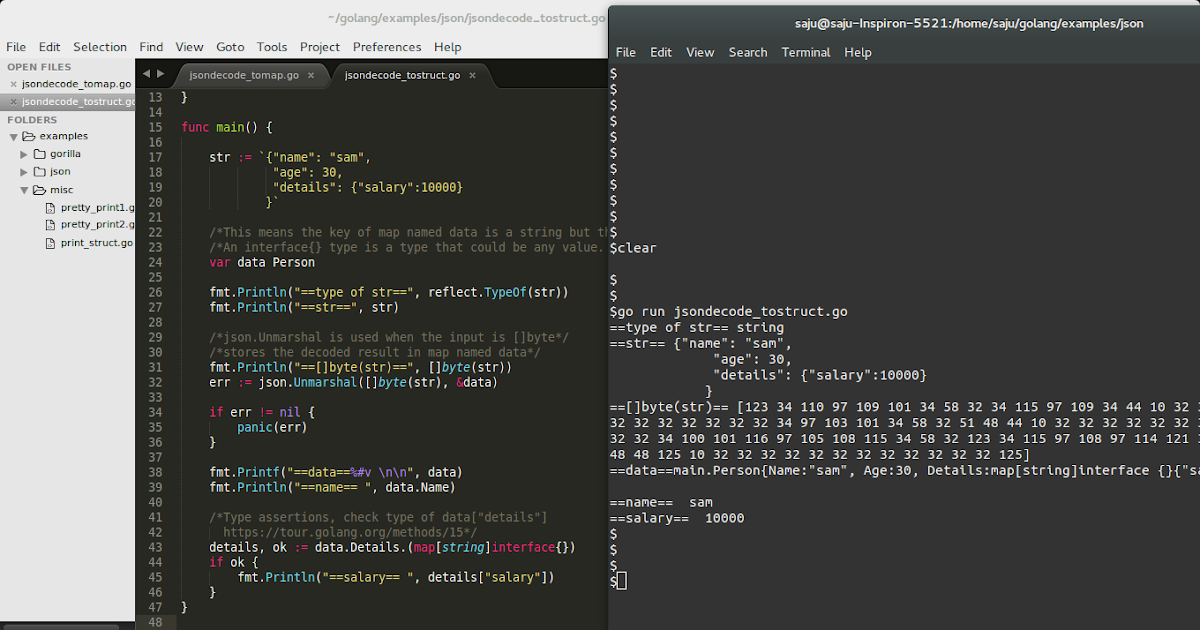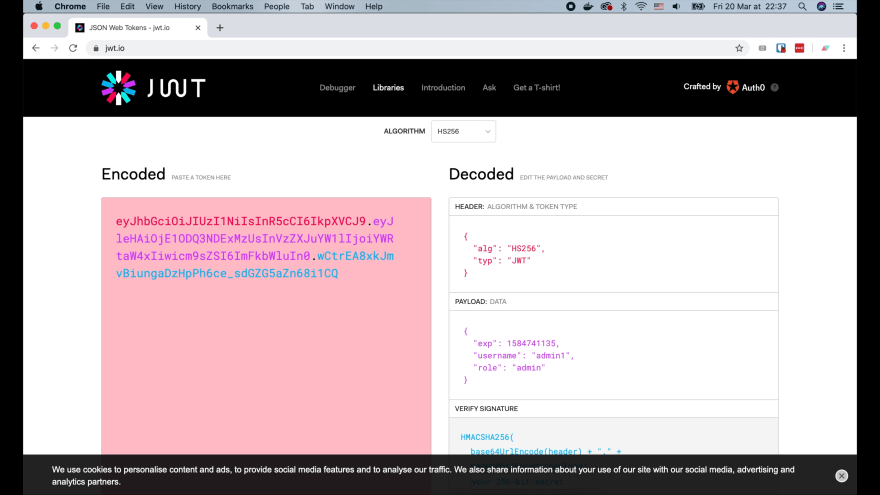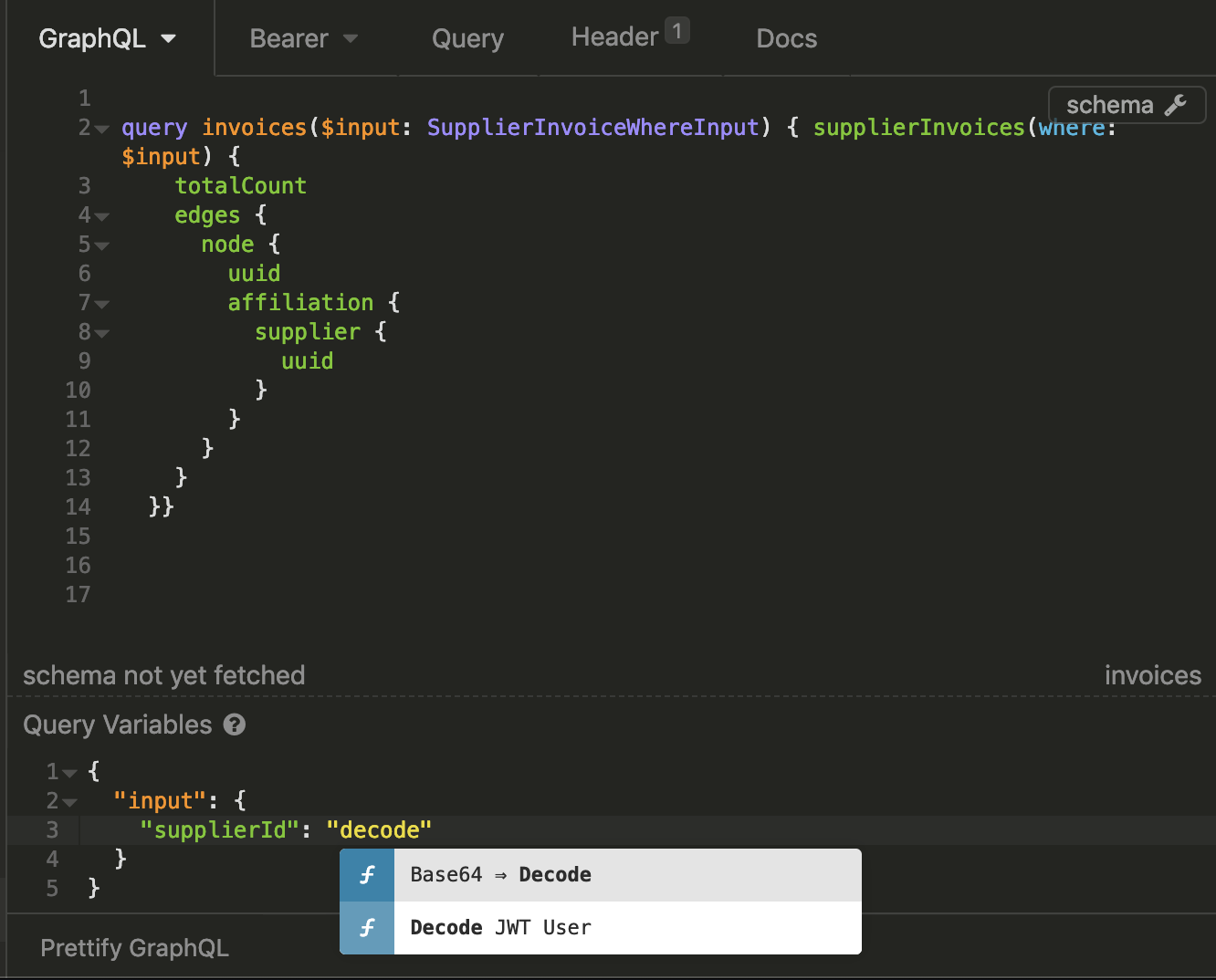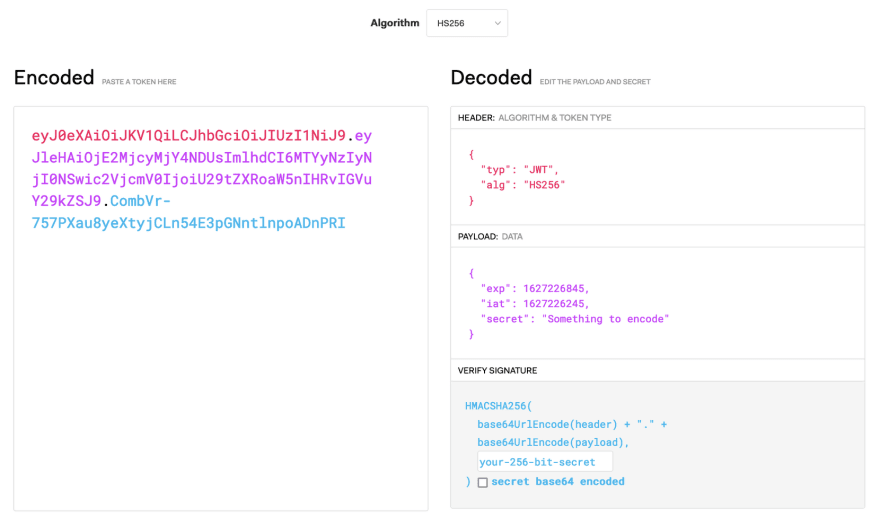
A token is made of three parts, separated by. It's commonly used for Bearer tokens in Oauth 2. In short, it's a signed JSON object that does something useful (for example, authentication). JWT.io has a great introduction to JSON Web Tokens. We no longer support building jwt-go with unsupported Go versions, as these contain security vulnerabilities So we will support a major version of Go until there are two newer major releases. Our support of Go versions is aligned with Go's version release policy. This library attempts to make it easy to do the right thing by requiring key types match the expected alg, but you should take the extra step to verify it in your usage. SECURITY NOTICE: It's important that you validate the alg presented is what you expect.
Golang decode jwt upgrade#
Recommendation is to upgrade to at least 1.15 See issue dgrijalva/jwt-go#216 for more detail. SECURITY NOTICE: Some older versions of Go have a security issue in the crypto/elliptic. See dgrijalva/jwt-go#462 for a detailed discussion on this topic. See the MIGRATION_GUIDE.md for more information.Īfter the original author of the library suggested migrating the maintenance of jwt-go, a dedicated team of open source maintainers decided to clone the existing library into this repository. Starting with v4.0.0 this project adds Go module support, but maintains backwards compatibility with older v3.x.y tags and upstream /dgrijalva/jwt-go. NewValidationError(errorText, errorFlags)Ī go (or 'golang' for search engine friendliness) implementation of JSON Web Tokens.

ParseWithClaims(tokenString, claims, keyFunc, options) (m) Verify(signingString, signature, key) (p) ParseWithClaims(tokenString, claims, keyFunc) Let’s start with creating a simple web server with an endpoint that will be secured with a JWT.ParseRSAPrivateKeyFromPEMWithPassword(key, password) You’ll use these packages in this tutorial to log errors, set up a server, and set the token expiration time. Once you’ve installed the golang-jwt, create a Go file and import these packages and modules: import (
Golang decode jwt install#
Getting started with the Golang-JWT packageĪfter setting up your Go workspace and initializing the Go modules file go.mod, run this command on your terminal in the workspace directory to install the golang-jwt package: go get /golang-jwt/jwt Generating JWTs using the Golang-JWT pakage.Getting started with the Golang-JWT package.

Experience building web applications in Go or any other language (optional).Go 1.16 or later installed on your machine (for security reasons).

You’ll need to meet these basic requirements to get the most out of this tutorial. The golang-jwt package provides functionality for generating and validating JWTs.

The golang-jwt package is the most popular package for implementing JWTs in Go, owing to its features and ease of use. This article is aimed at helping you get started with implementing JWT authentication in your Go web applications using the golang-jwt package. JSON Web Tokens (JWTs) are a popular method for dealing with online authentication, and you can implement JWT authentication in any server-side programming language.įor background reading JWTs in general, I recommend learning more about JWTs, best practices, and securing RESTful APIs with JWTs with these articles on the LogRocket blog. Find me on Twitter A guide to JWT authentication in Go Ukeje Goodness Follow I am a data analyst who writes about cryptocurrencies and decentralized ledger technologies.


 0 kommentar(er)
0 kommentar(er)
